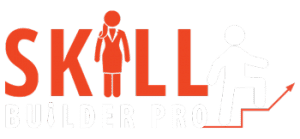In the world of athletics, coaching is a must for performance. This process enhances the athlete’s development as the coach supports them with training and guidance learned from experience. This kind of mindset should also apply to the performance in the workplace—and coaching is just as important here as it is on the court or field!
Managers aren’t only bosses; they are also mentors. Employees maximize their potential when managers put them in the right positions, support them with an effective team, and help them develop new skills. Good managers also continuously guide and motivate their employees throughout their careers. This often leads to better morale and better performance—which is great for both the company and the employee!
Managers can become more effective by employing coaching techniques to boost their employees’ performance. If you’re feeling a bit lost, then here are some tips for more effective coaching:
Have one-on-one discussions with your employee
A track coach would tell their runner how they are running and what they can do to run even faster. Given that example, approach how you raise gaps in performance in a similar way. Rather than focusing on the problem, state what you can concretely observe then suggest ways the employee can improve.
Equally important is to listen to the employee’s feedback. As you discuss the difficulty or problem with your employee, you may find a solution to the root issue and plan for improvement, which you should discuss and arrive at collaboratively. Take care not to pin the blame on anybody and keep in mind that you’re ultimately here to help your employee do better.
Create action plans with concrete goals
Developing action plans with concrete goals will let employees know which targets to aim for and how they can reach them. Managers must outline what steps he or she will take to support their employee along the way. Remember that planning and building solutions should be a two-way effort—it’s pointless if you simply dictate what your employee should do!
To monitor progress, set up checkpoints to follow up on your employee. Checkpoints can be done at regular intervals after the initial action planning or follow a more flexible schedule. These can be formal and informal, depending on what you and your employee are more comfortable with.
This ensures that your employee meets his or her targets to attain the larger goals you have set together. These follow-ups also focus on these goals, so improvement is continuous as they sustain good habits; after all, high performance shouldn’t be a fluke! Aim to get your employee to a long-term high-performance state rather than remaining at a short-term self-improvement level.
As performance improves, managers can lessen the frequency of checkpoints to quarterly checkup meetings, which should typically be done for all staff members too.
Provide opportunities for continuous learning
Employees are hungry for more learning and training opportunities as they strive to become more competent at their jobs. As a manager and coach, fostering a learning culture is essential for your team’s performance and overall success. A few benefits of a thriving learning culture are increased productivity, learning agility, and employee satisfaction.
This can be done in a multitude of ways. Besides doing so on the job, employees often seek out supplemental learning opportunities outside of their daily tasks. These include instructor-led training and seminars, simulations, management-specific initiatives, and e-learning, such as online courses. Managers can work with their employees to map out which training initiatives fit their goals in their roles and their overall career objectives.
Conclusion
Coaching is hard work; it is a two-way street that requires trust from both the manager-coach and the employee. This collaborative process focuses on solutions that fit their goals and the organization’s goals as well.
With proper execution, you can help your employees grow into their true potential. Consistent coaching and the use of learning tools will not only equip them with more knowledge and skills, but it will also take performance to the next level.
If you’re looking to be an even better coach, then why not apply for a coaching and mentoring online course? At Skill Builder Pro, we offer over 300 online courses, all of which are perfect for you and your employees’ personal and professional growth! Connect with us today and find the best courses fit for your needs.
